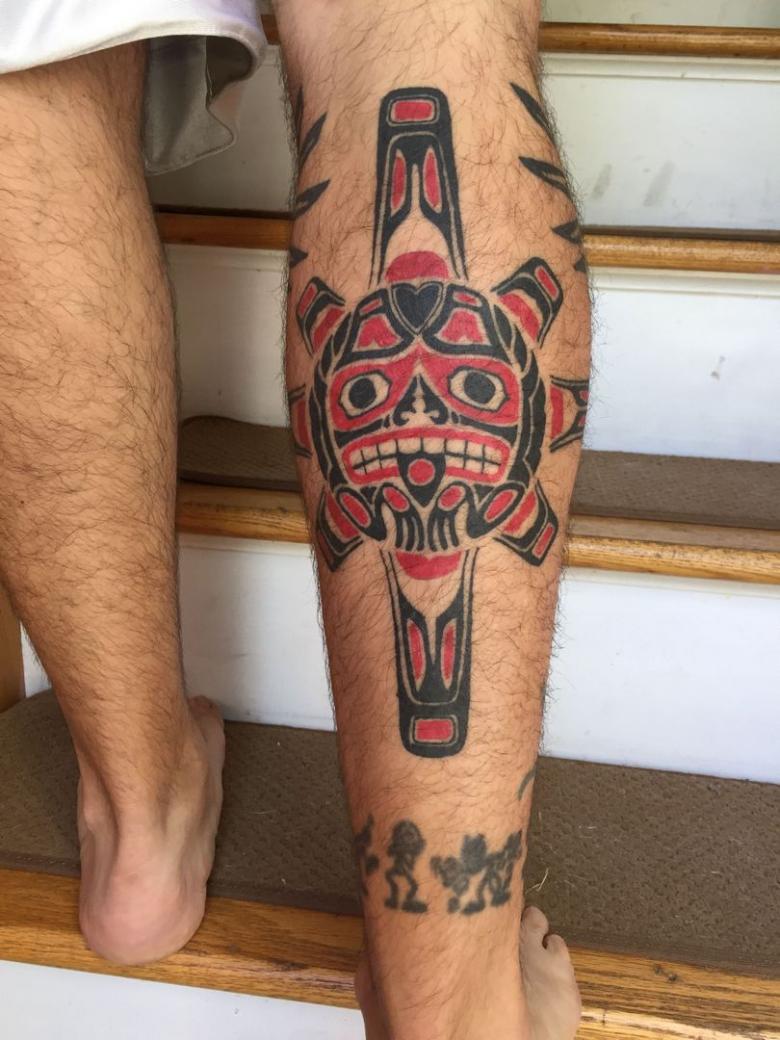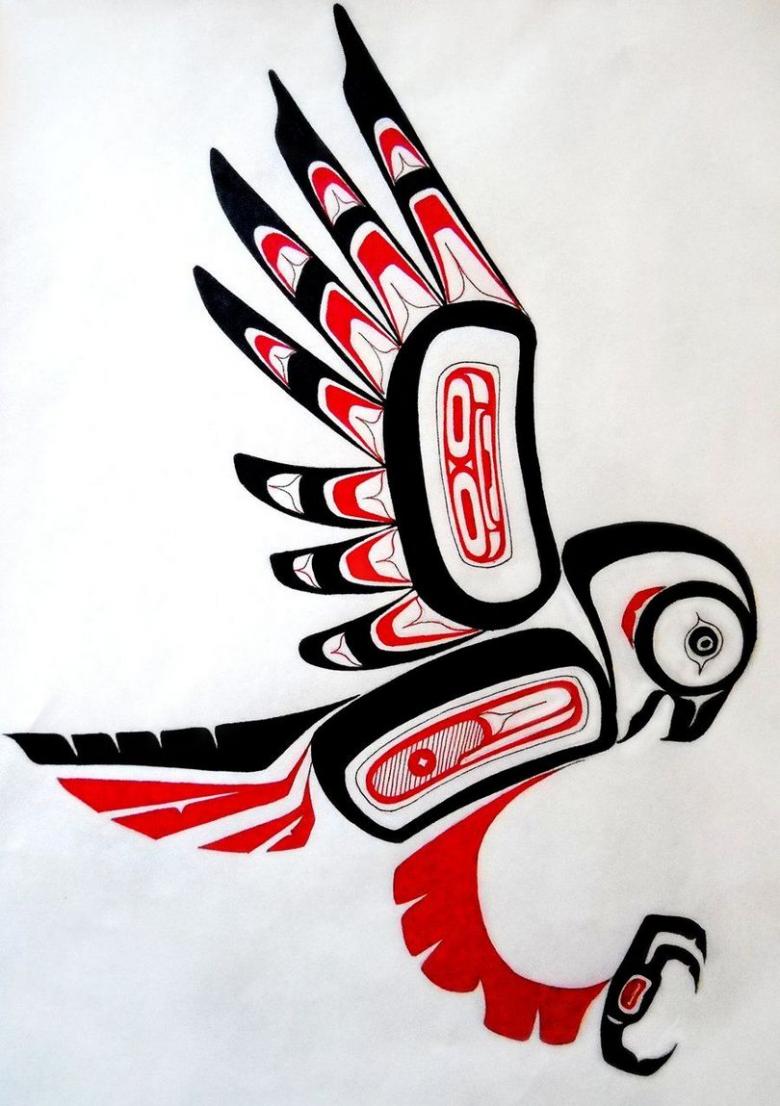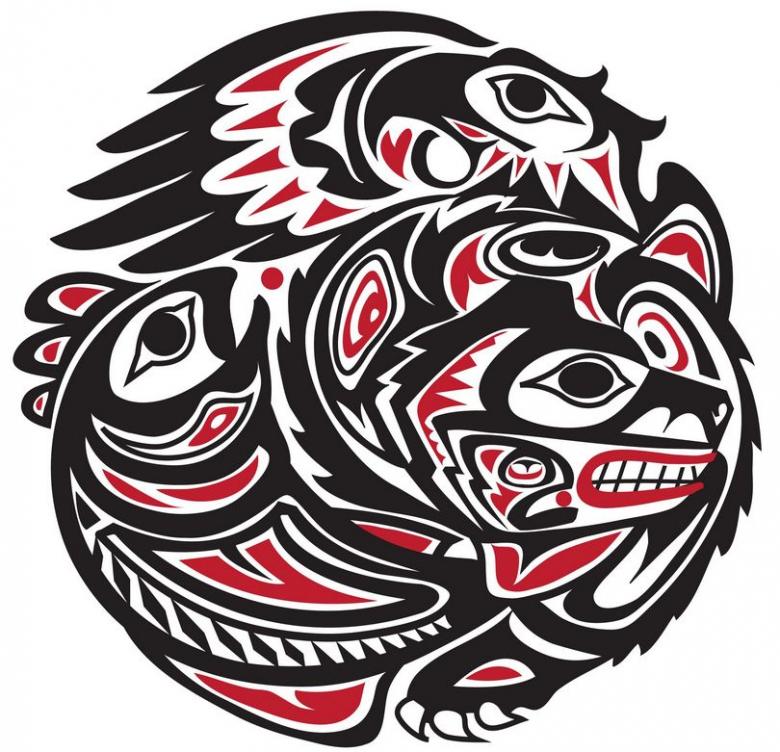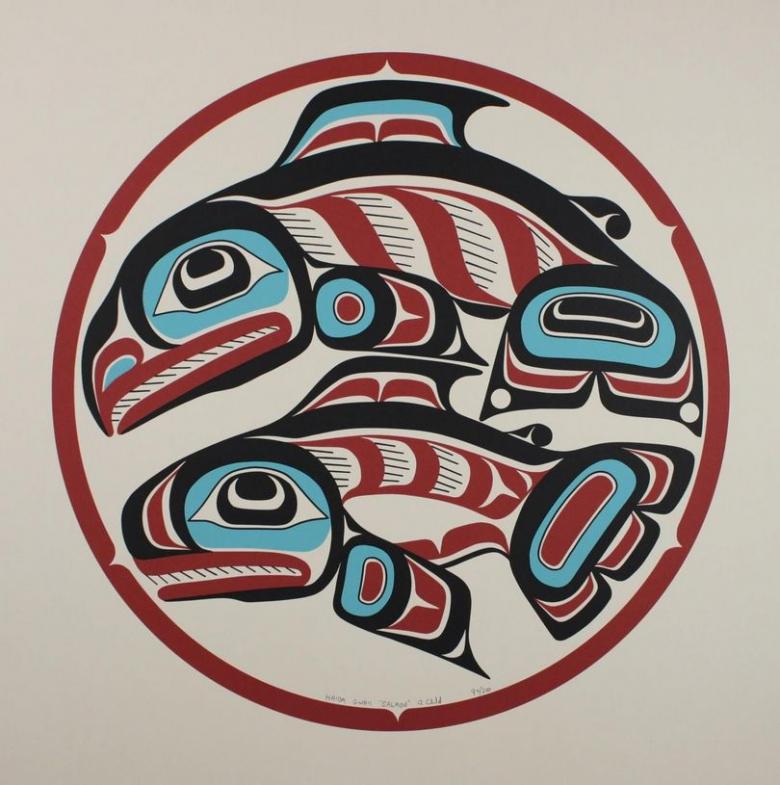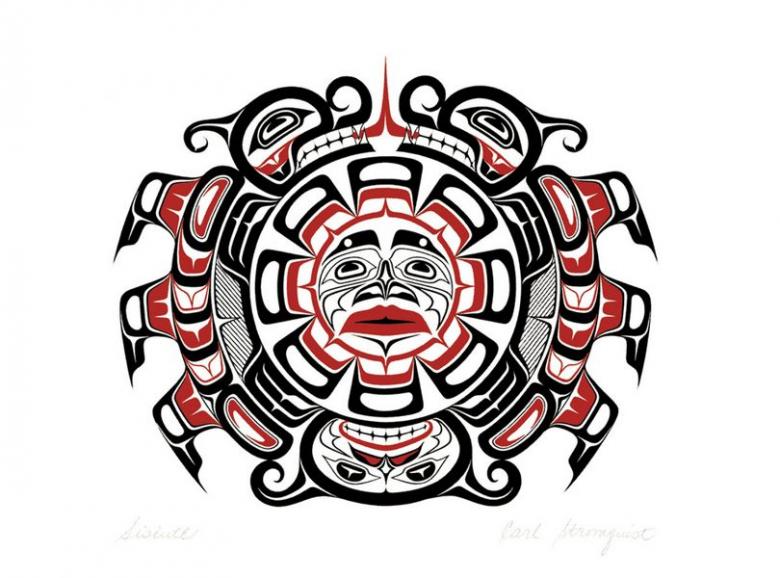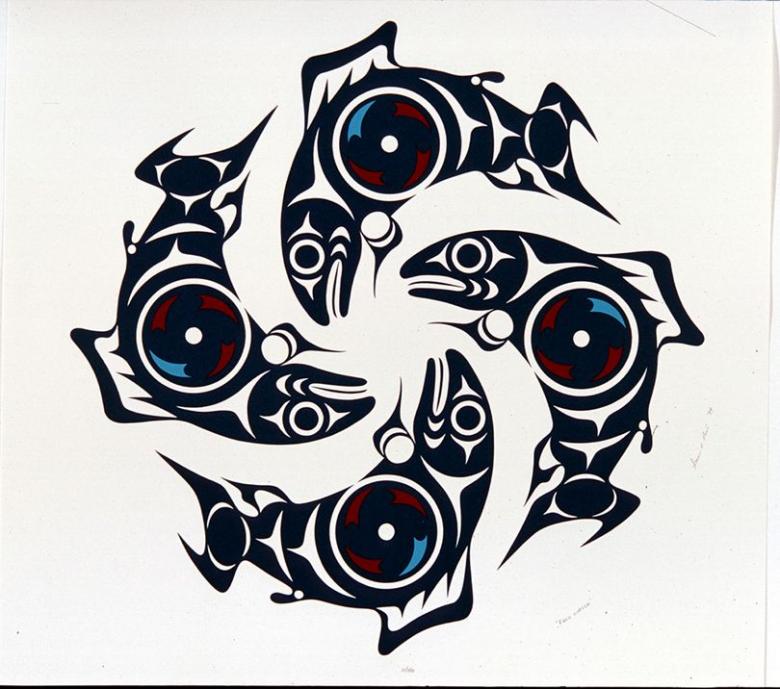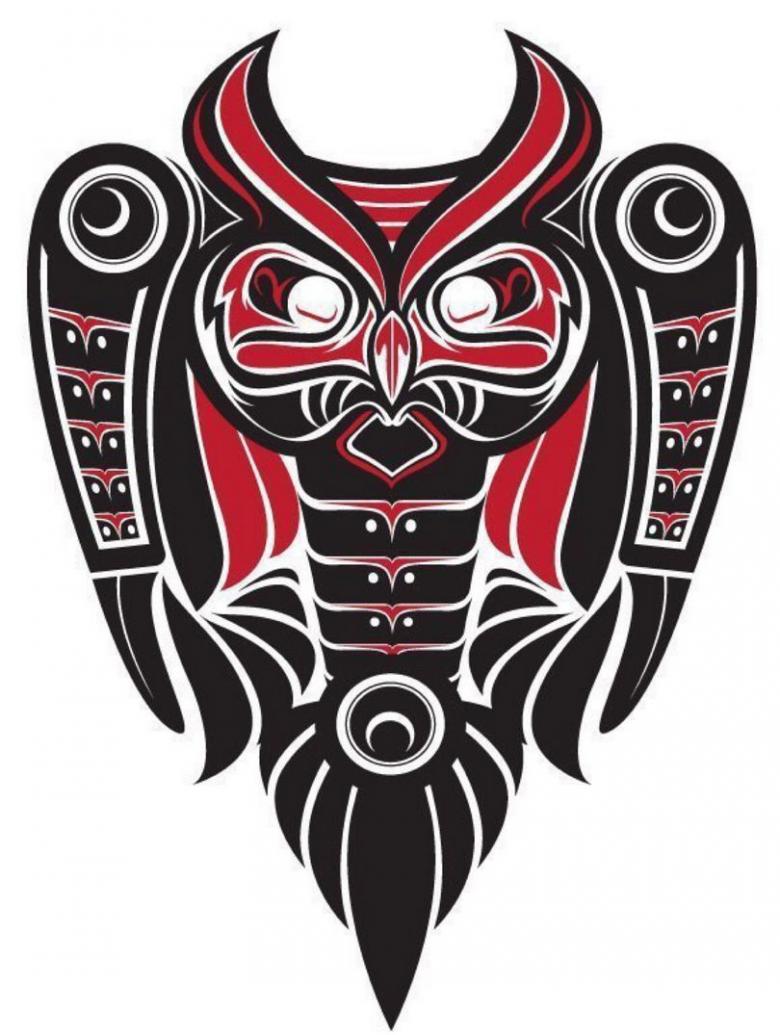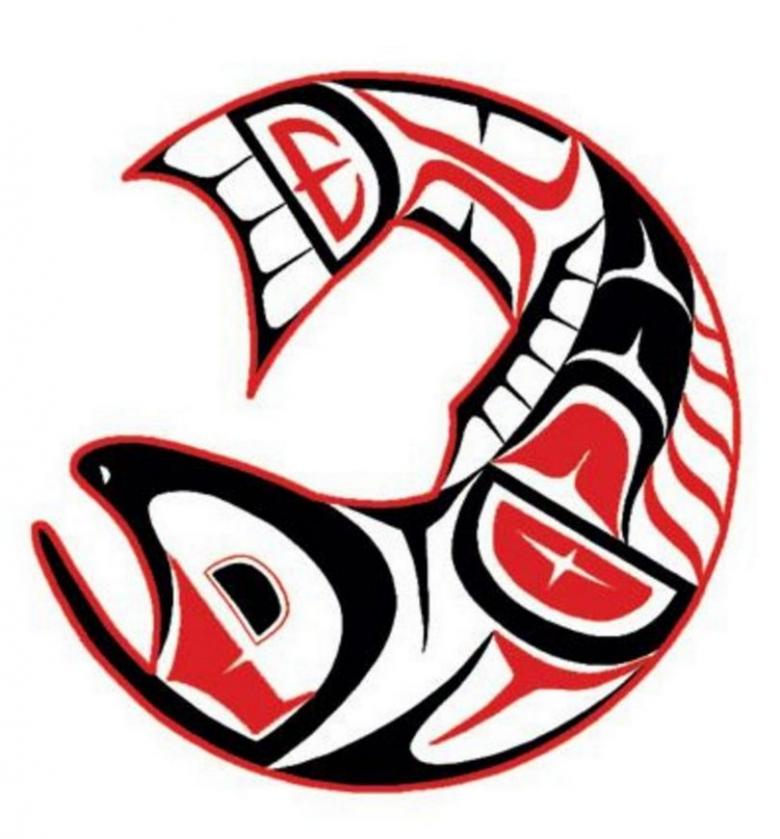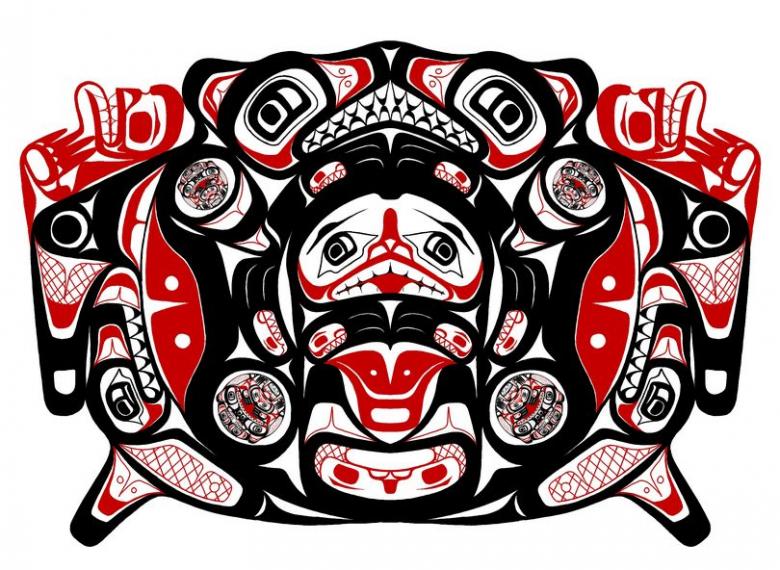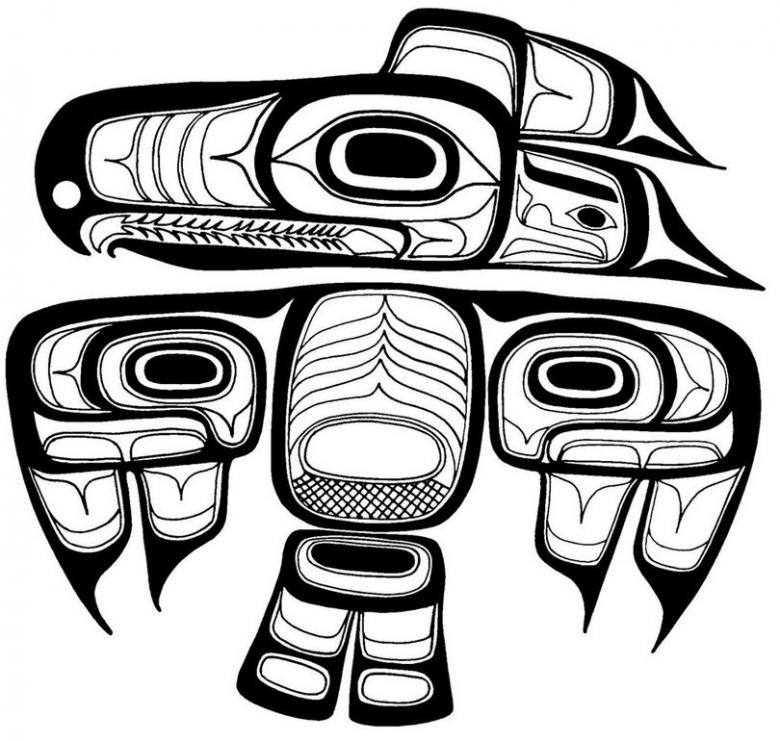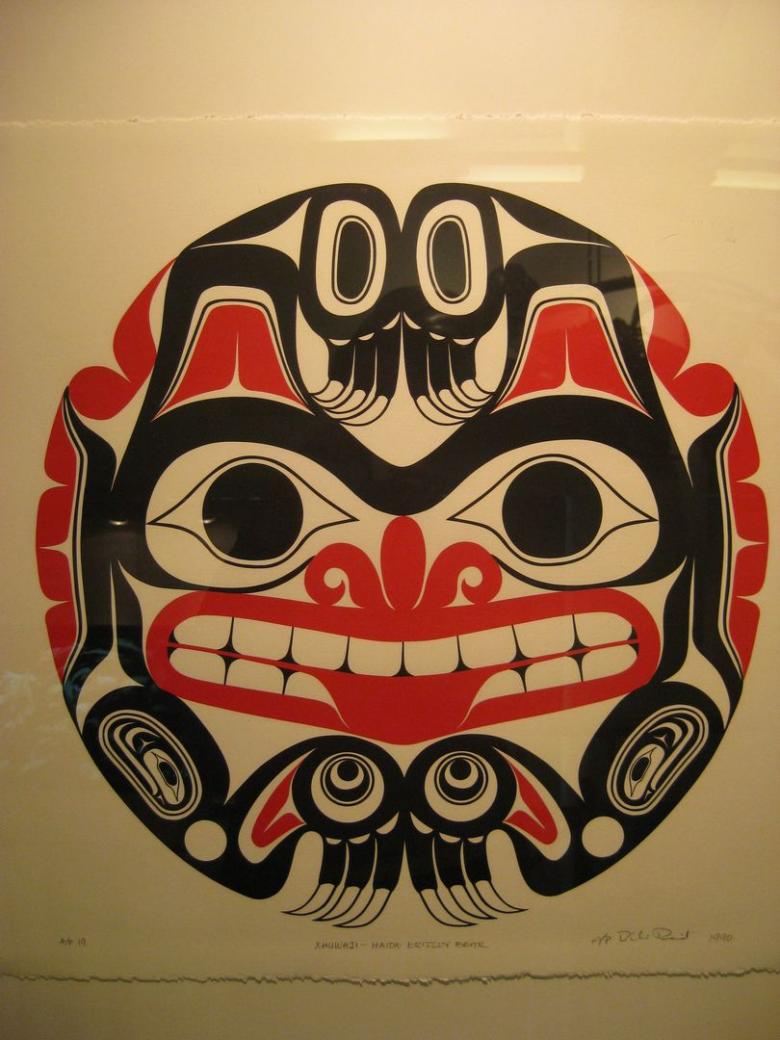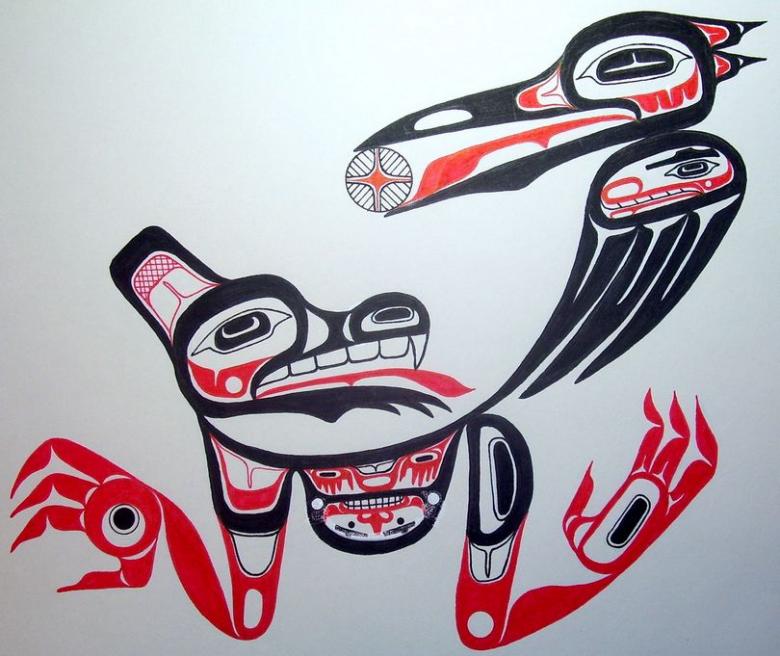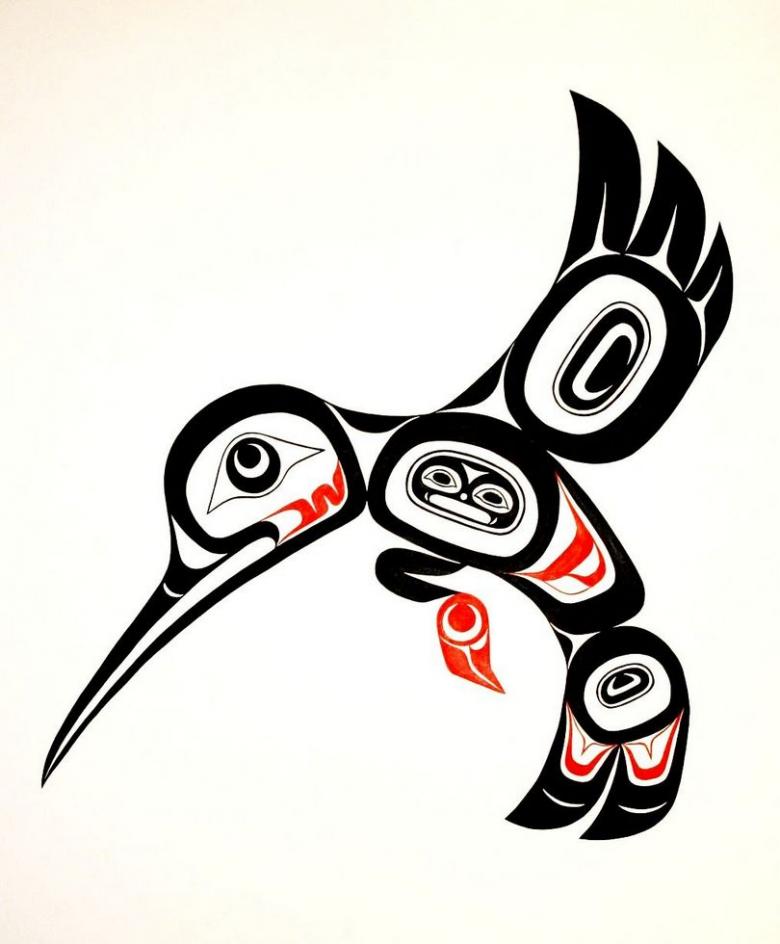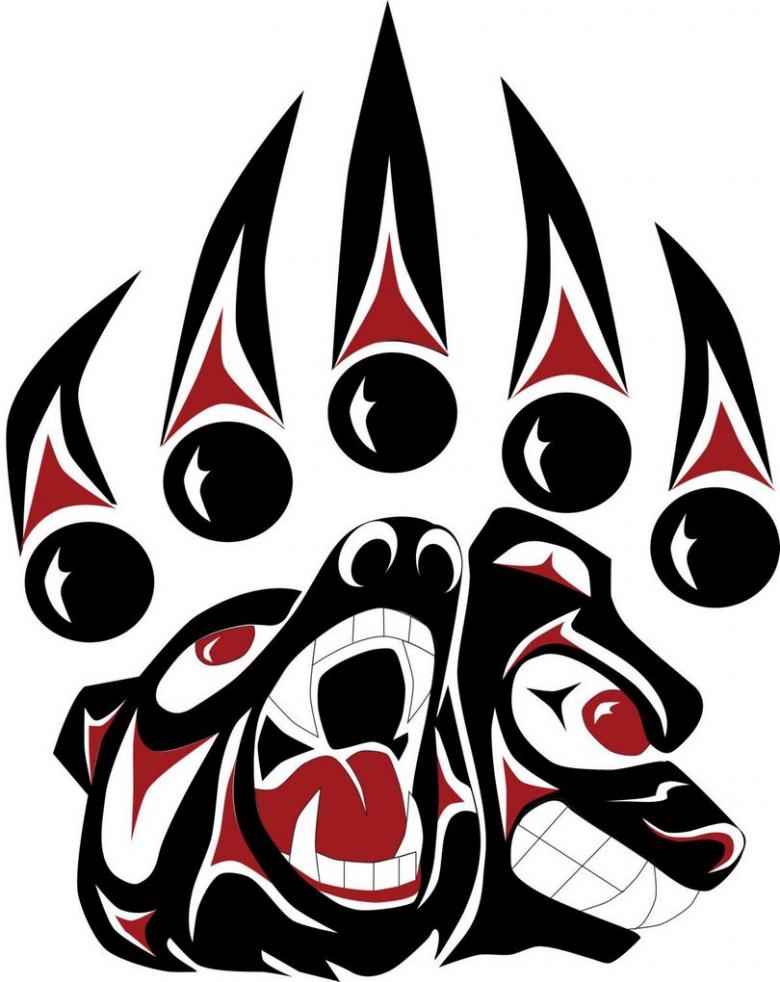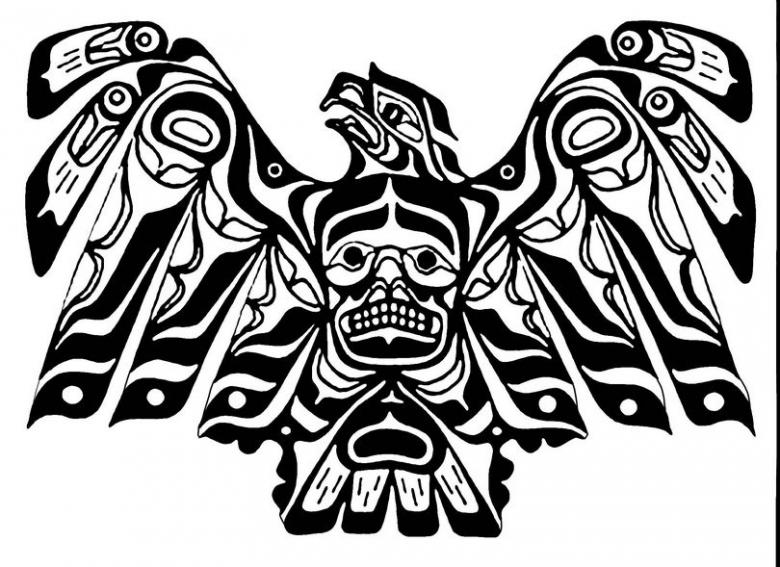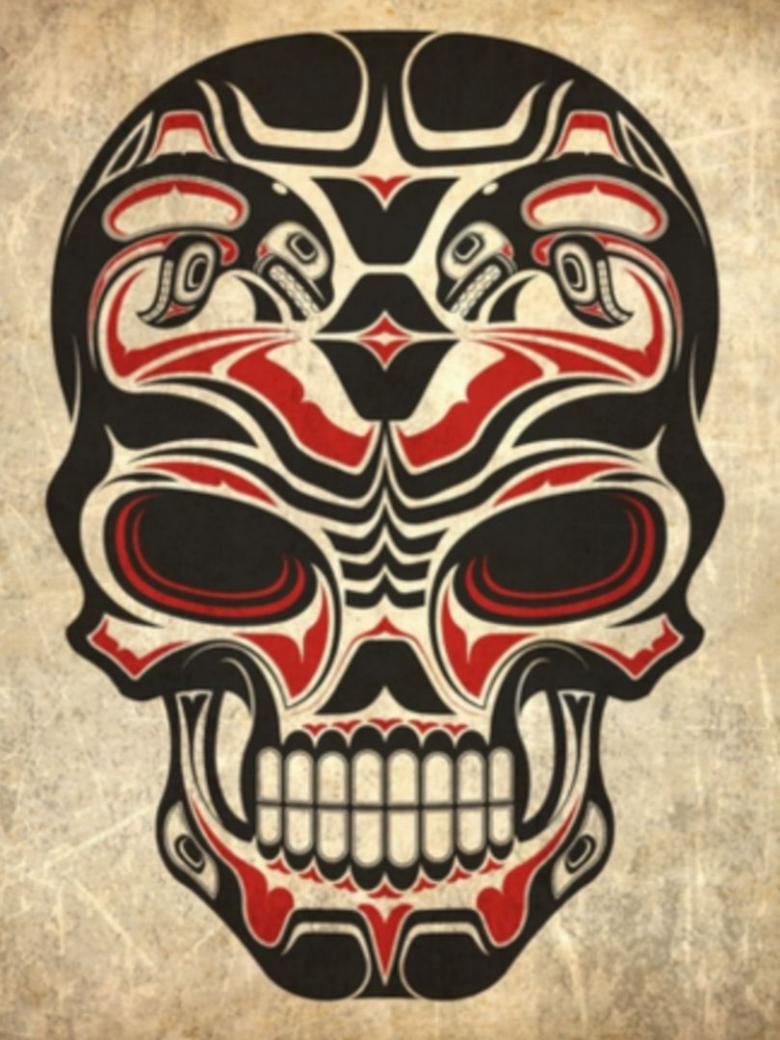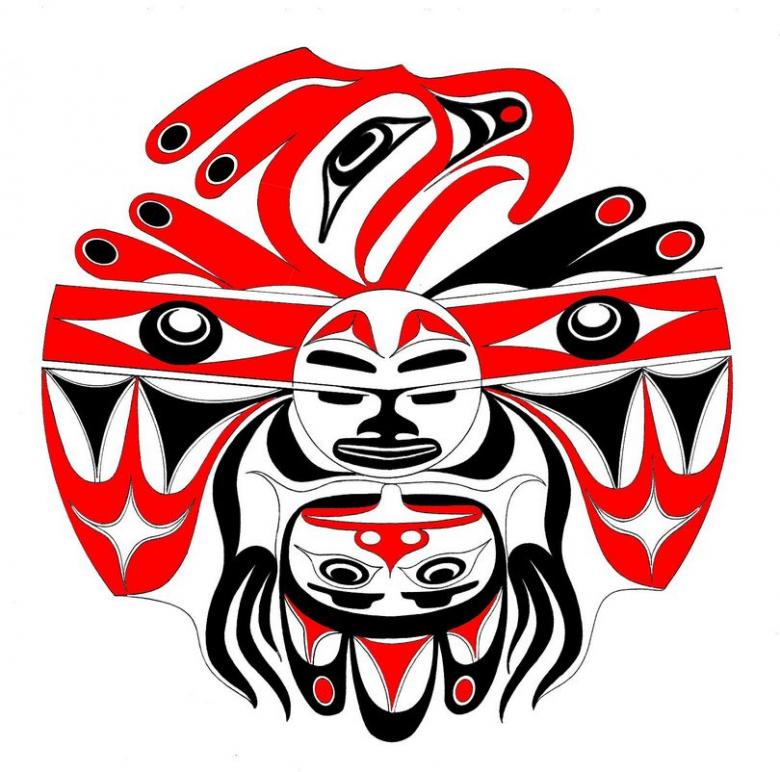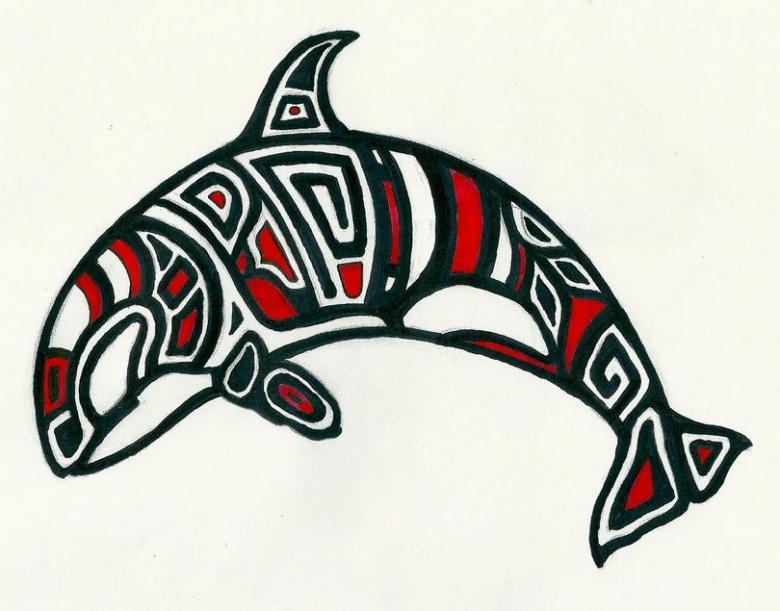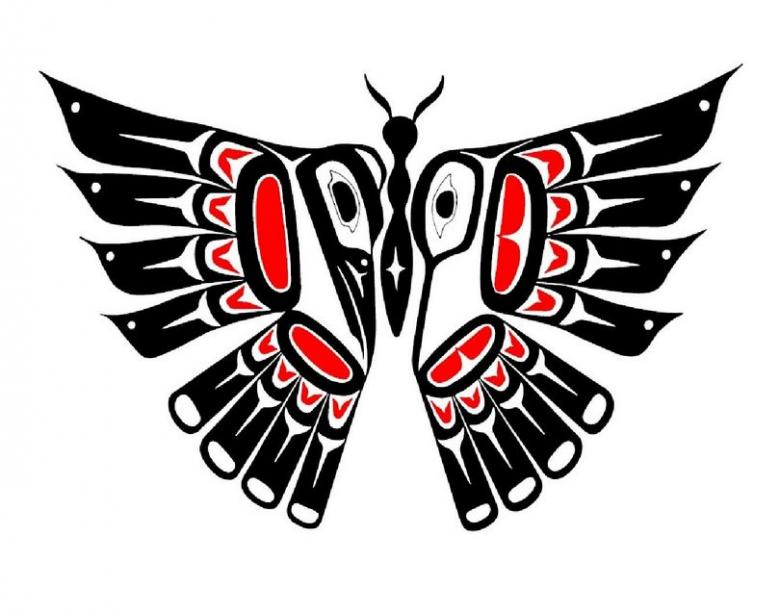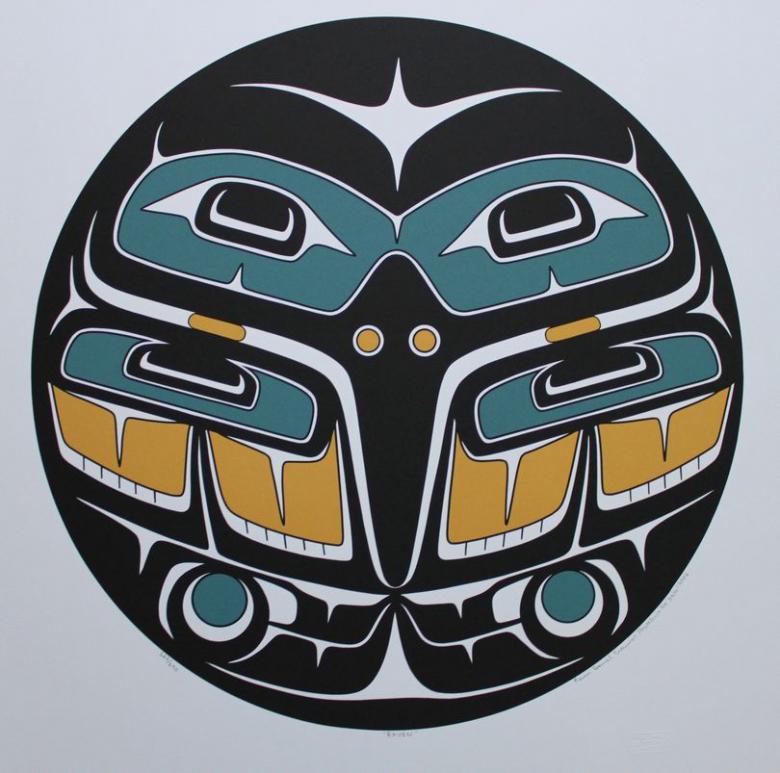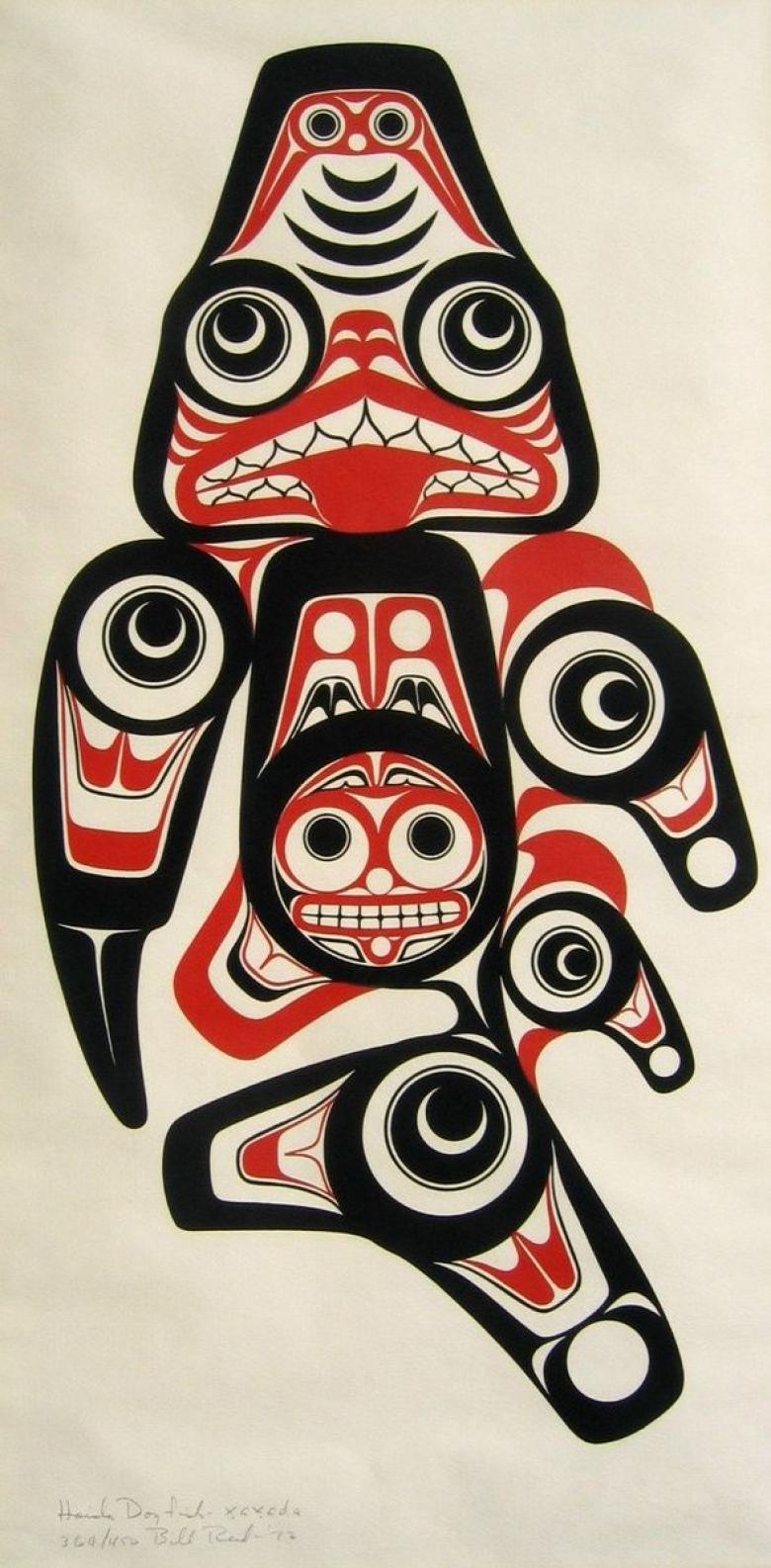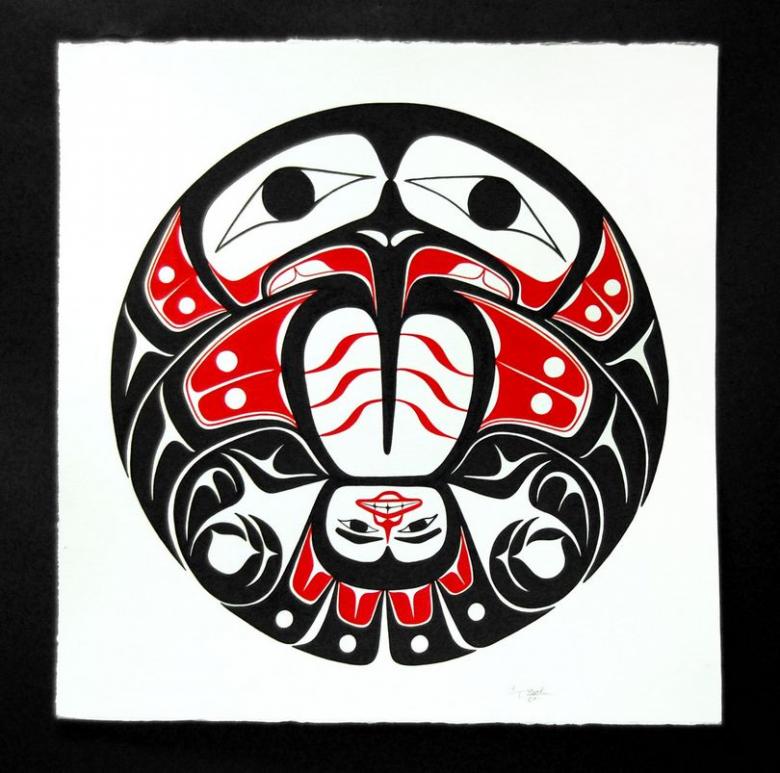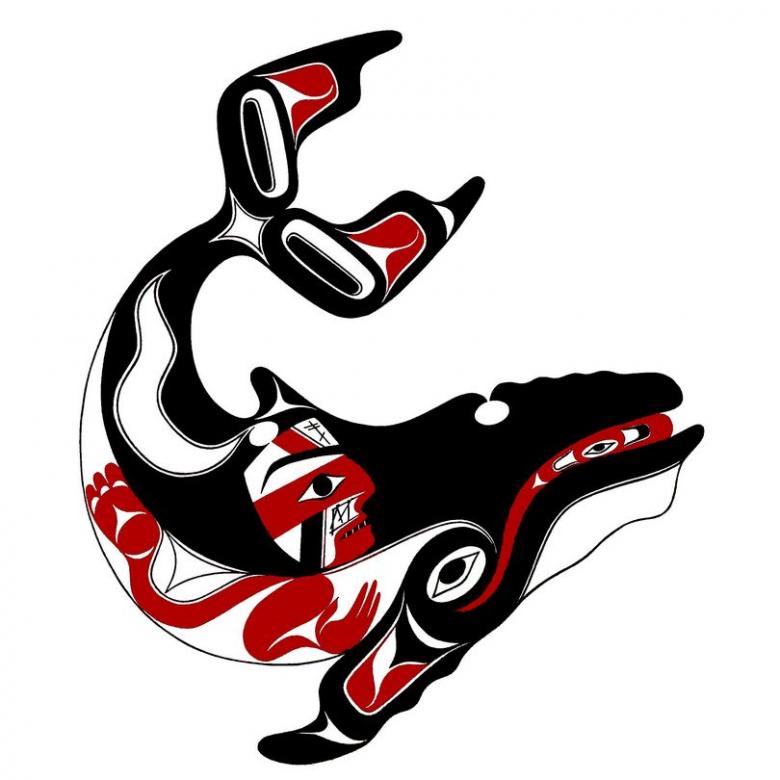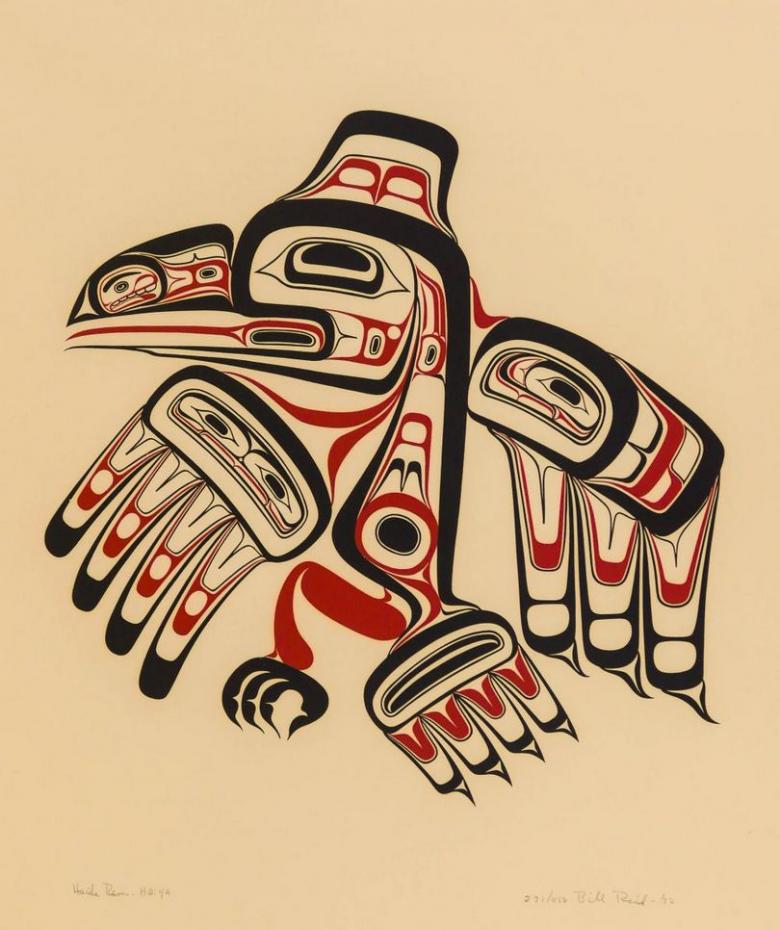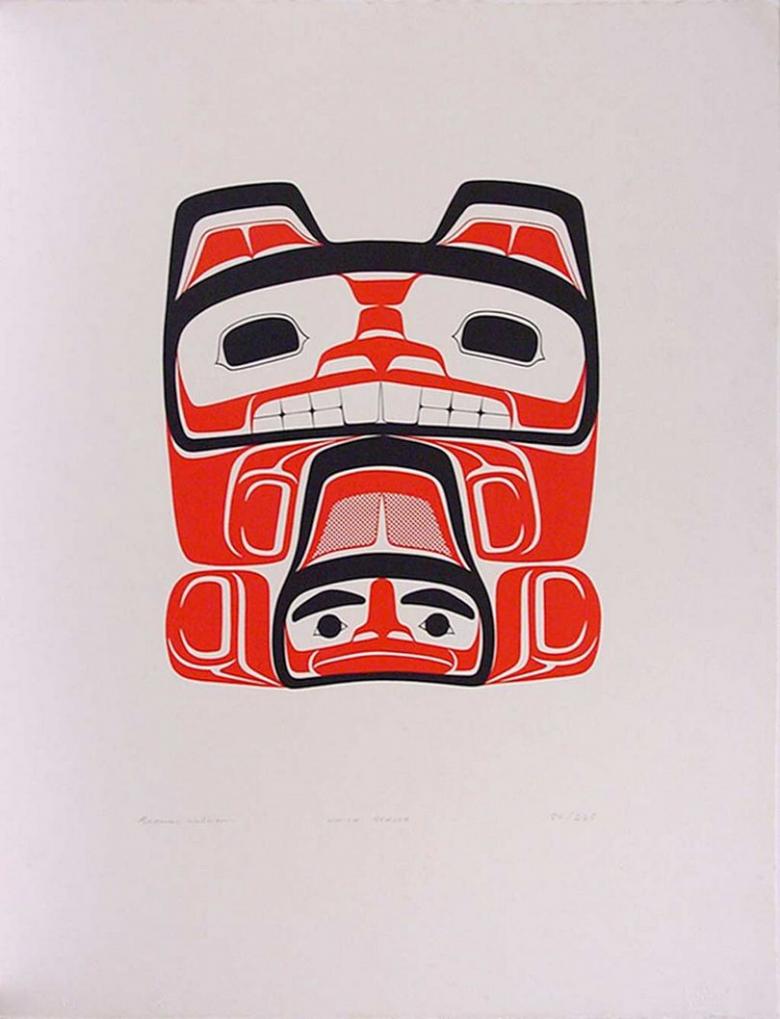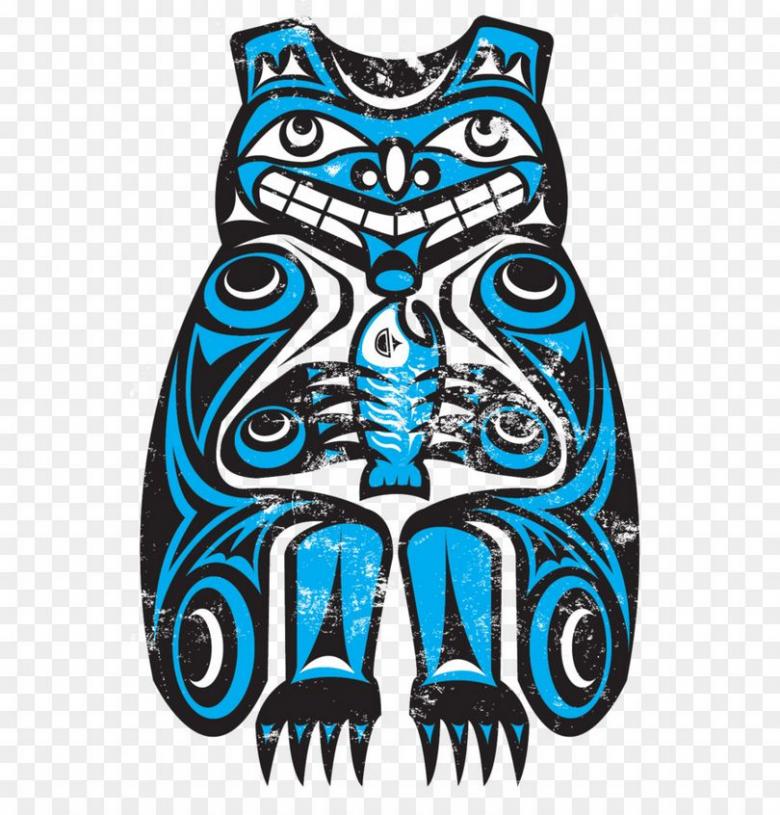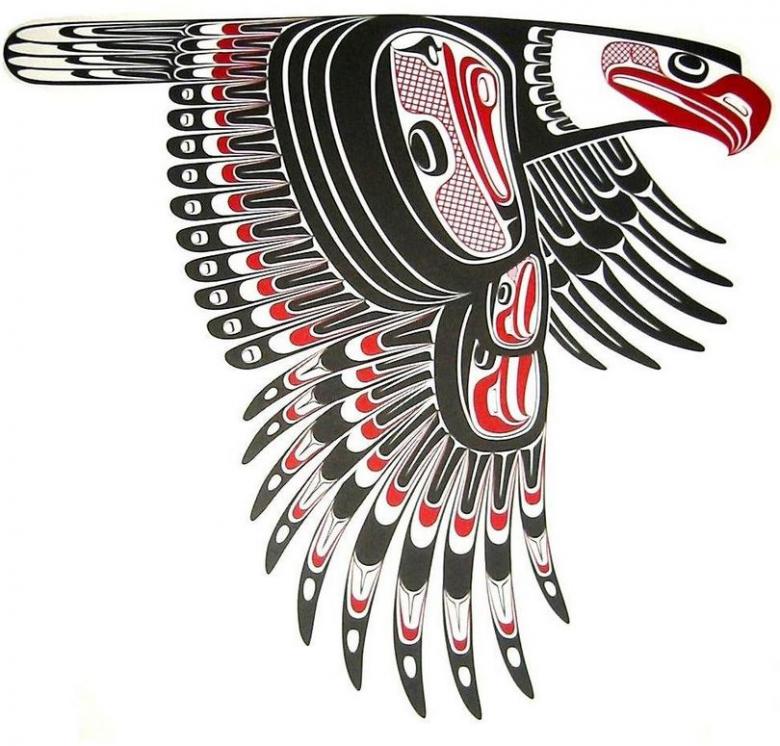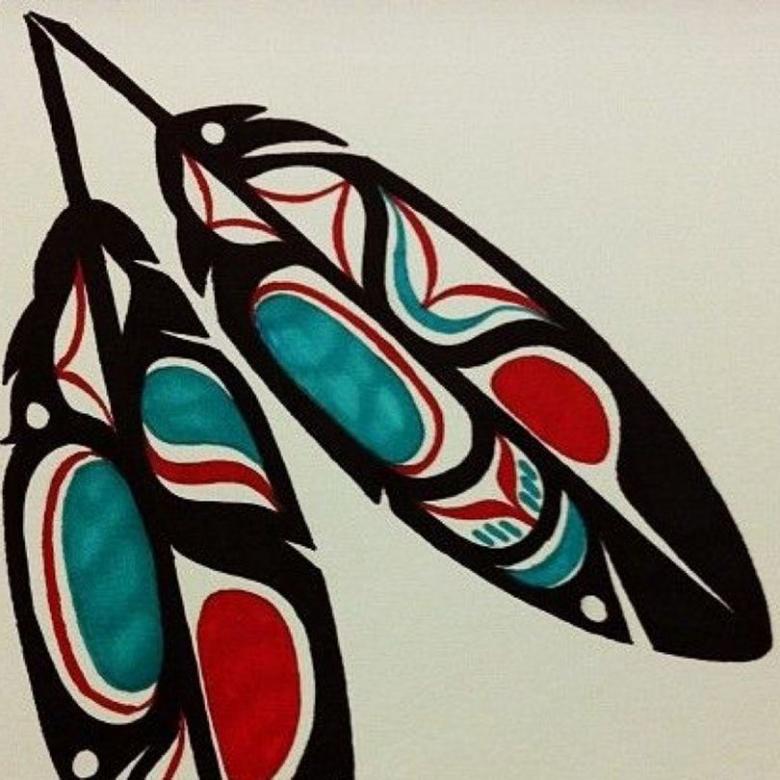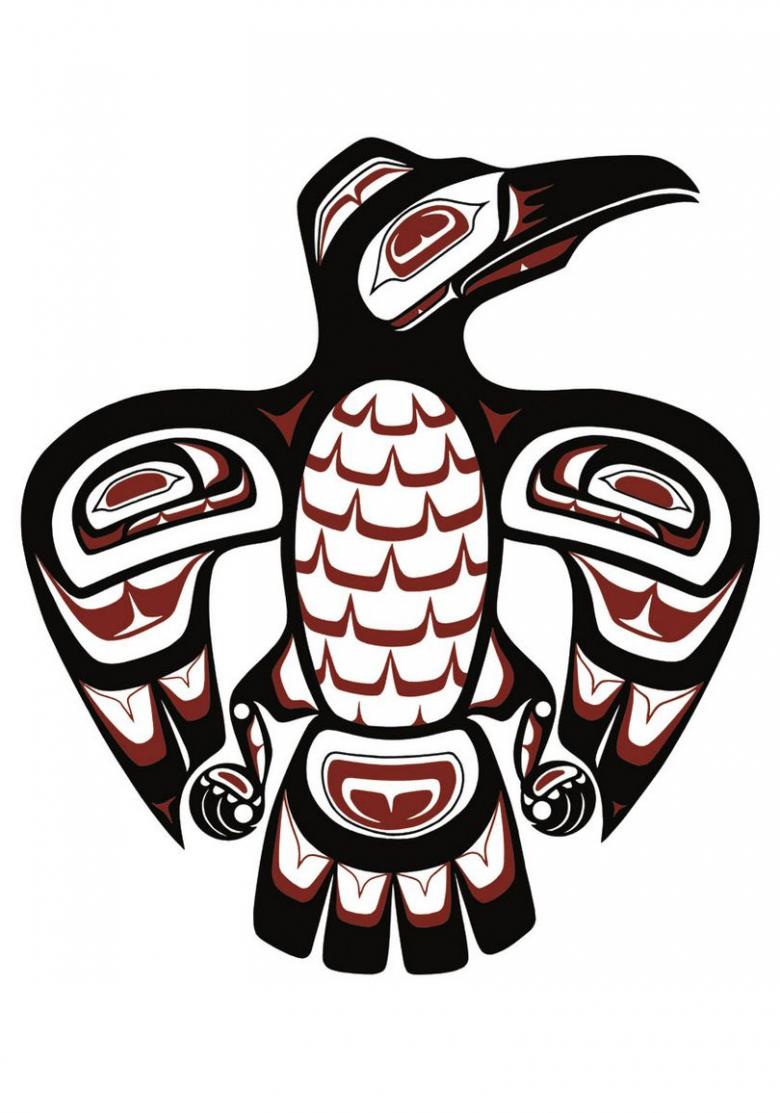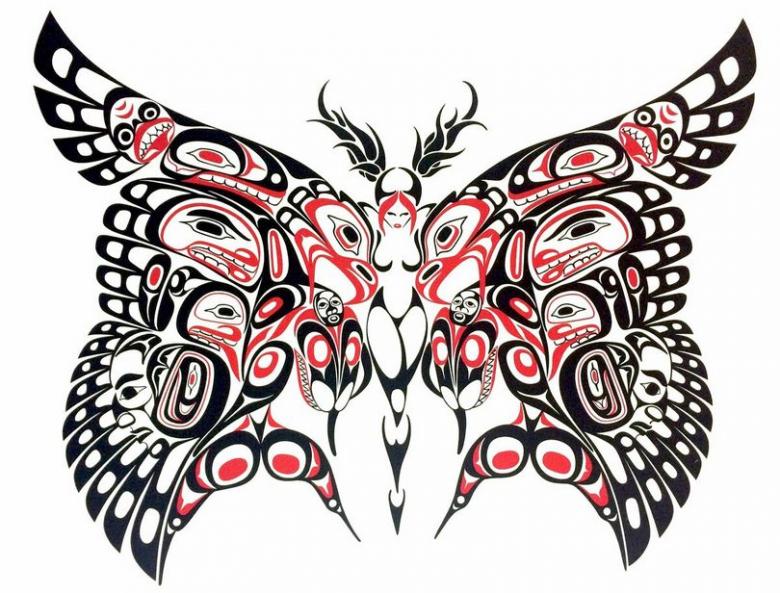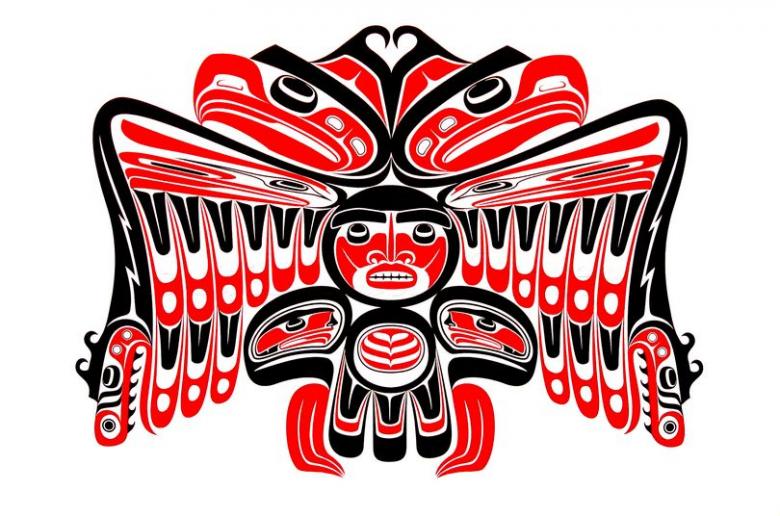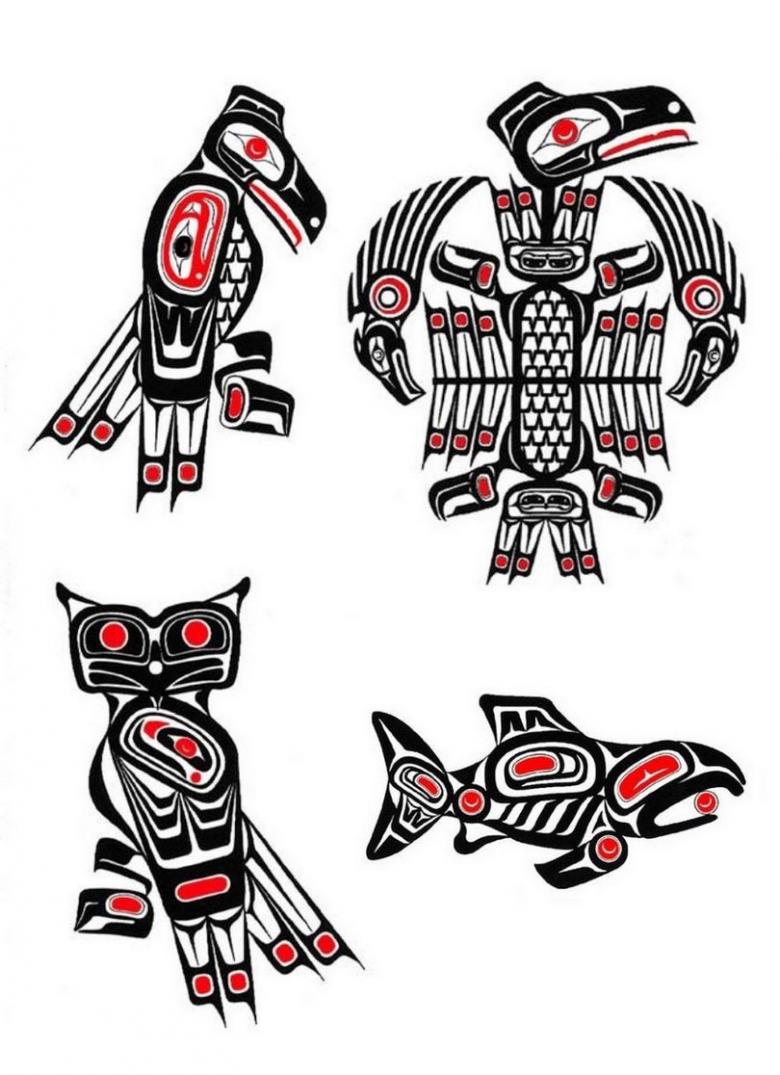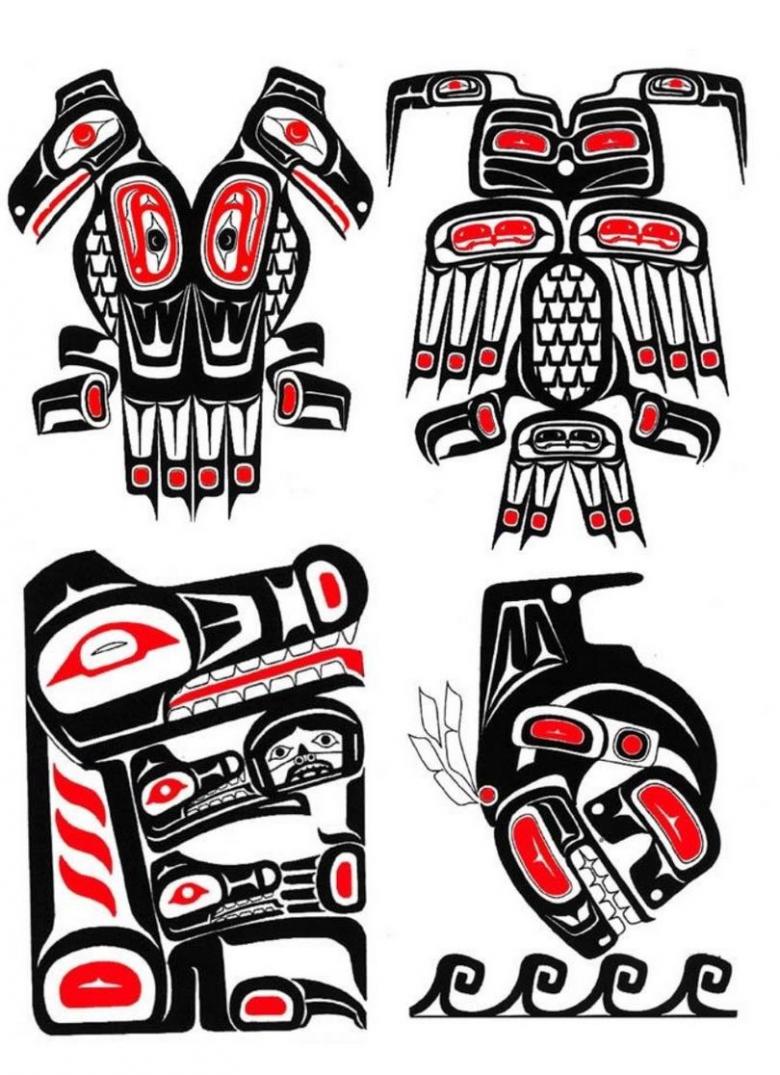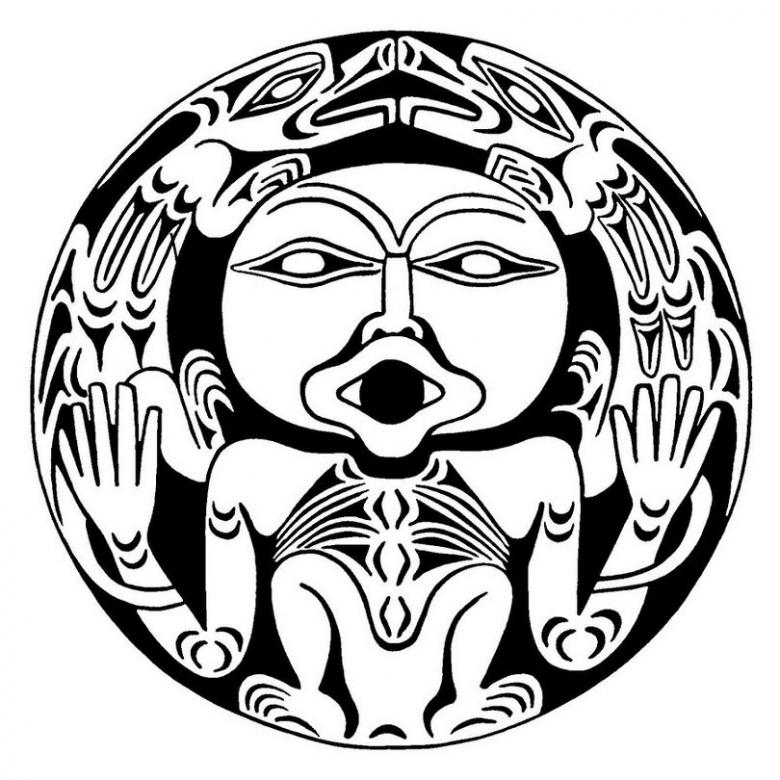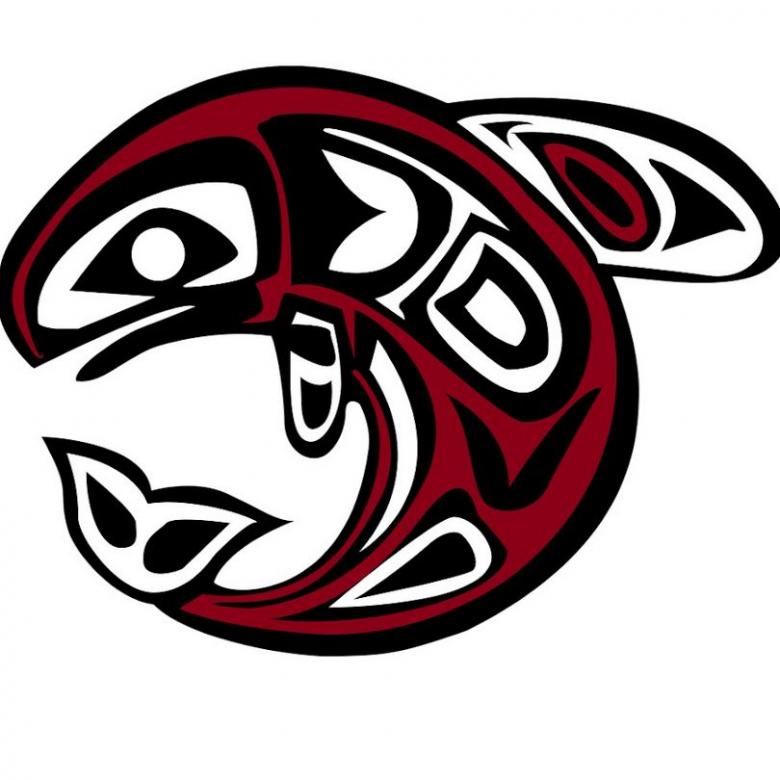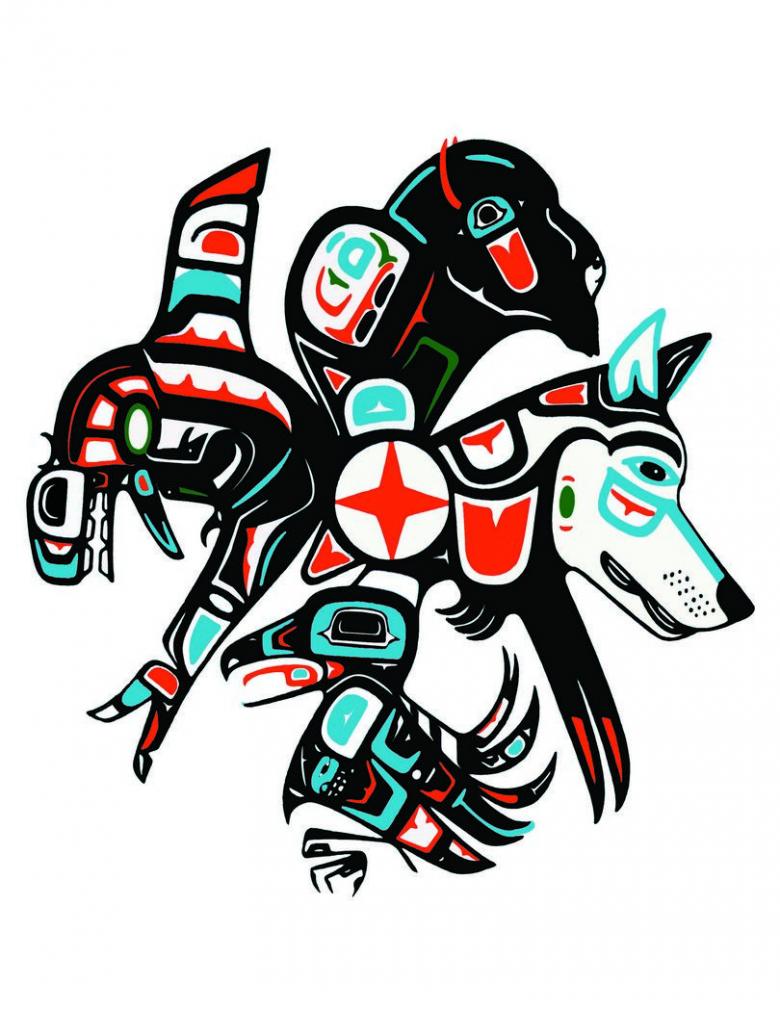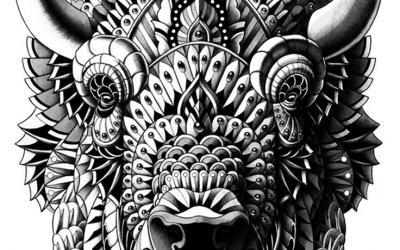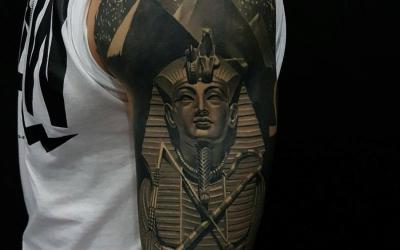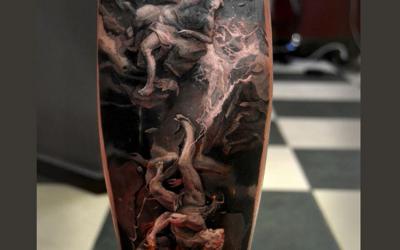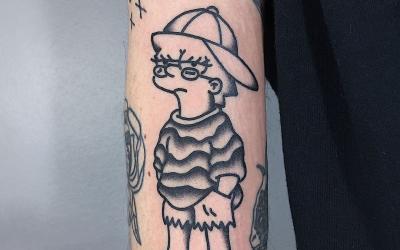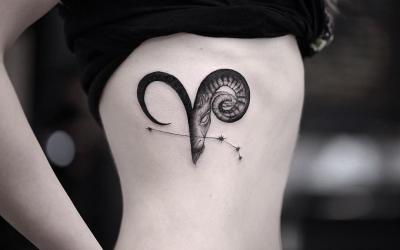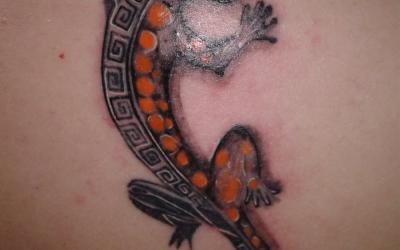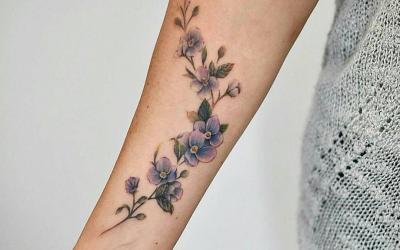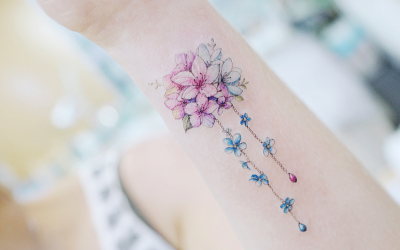Haida style tattoo - basic symbols, colors, styles, places of application (arm, shoulder, shoulder blade, like sleeve), interesting sketches and photo ideas
Surely many people have noticed on the body of some tattooed people unusual stylized drawings in the Indian style. The aesthetics of the tattoo called "Hyde" attracts many with its brevity, expression and reference to ancient origins. What can such a variant mean and what is the peculiarity of the Hyde tattoo?
History of Indian Symbolism
Once upon a time, the Haida Indian tribe from ancient times maintained a sacred tradition - to decorate the bodies of warriors with tattoos that could signify regalia and merit. The tribe lived on the island of Haida-Guay in North America, numbering only about 15,000 members.

There are still descendants of this people today, and they live on Haida Island, Alaska, and Canada. However, now the number of Indians is only 3 thousand people. From them to the mass culture came the tradition of tattoos in the original, bright style.
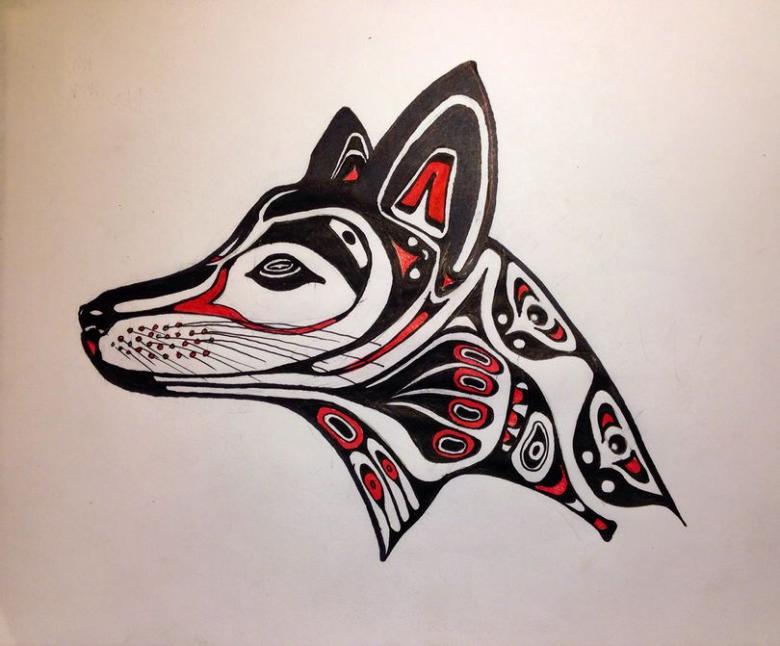
Of course, the ancient initiation traditions of these people have nothing in common with the modern popular body decoration. Ancient warriors applied tattoos as a sign of belonging to the clan, to protect against evil spirits and to attract the patronage of natural guardians.

They also did tattoos on the so-called "day of giving," when they honored deceased ancestors. It was the moment to put signs of protection on the bodies of Indian children - an ornament or stylistic image of a totem animal.

The places for drawing were chosen according to the sex of the child. Boys received a tattoo on their chest or back, girls on their arms or shoulders. But always this tattoo had a positive meaning - guarding, calling for ancestors' support and just decorating the body. They were crows, eagles, predators, symbols of the elements.

Today, the hyde aesthetic has attracted the attention of tattoo artists and lovers of totem images. Tattoo culture has brought new style solutions, a fresh stream and an unusual color scheme to the tradition. But if we compare ancient tattoos and modern ones, there are few differences, in many ways customers and masters seek to preserve the original appeal of this trend.

The choice of drawing
Mostly haida is expressed in animal subjects:
- eagles, falcons, crows;
- owls, hummingbirds;
- whales (blue whale);
- bears, wolves;
- chameleons;
- boars, hares;
- deer, elk, horses;
- dolphins, sharks, turtles, piranhas;
- feathers and beads, bracelets;
- Sun, Moon, stars.
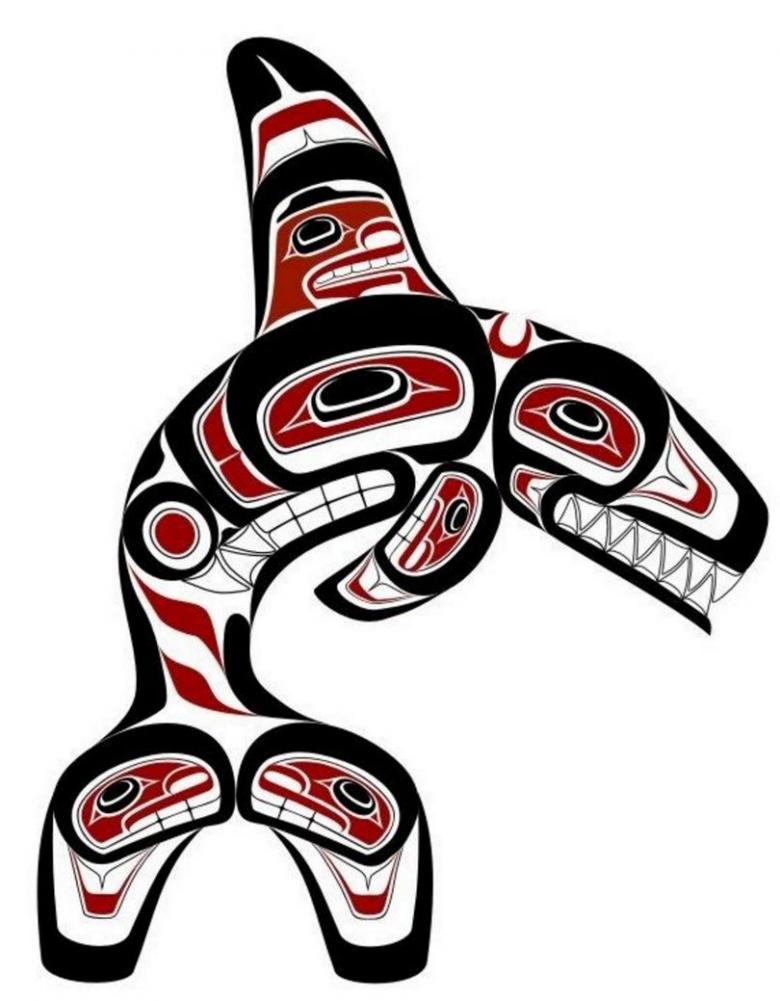
The tattooing is performed approximately in such places as the scapula, the whole chest (especially if it is a bird with open wings), the sternum, forearms, ribs, and collarbones. Often the tattoo is done in the form of a sleeve - from shoulder to forearm, as well as on the sides.

The color palette is very small. Basically they use one or two colors or a combination of the main four colors: black, red, blue, green.
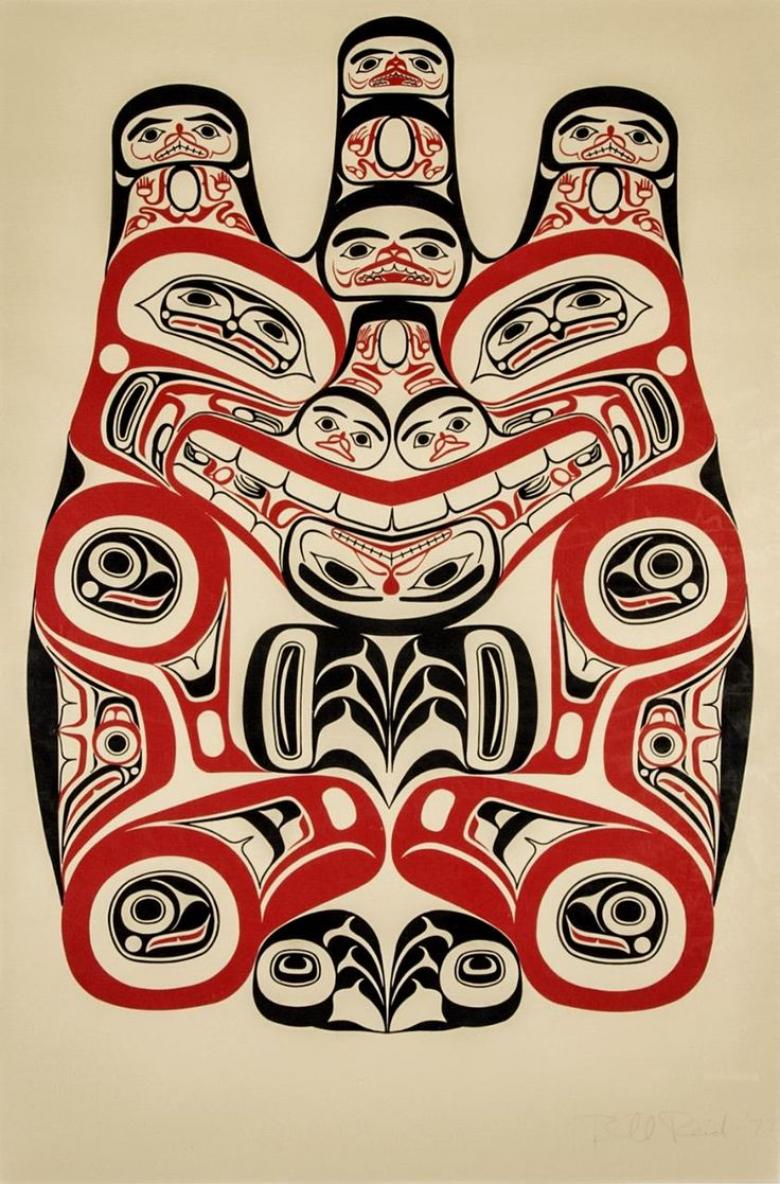
Meaning is played by every detail, including the color:
- red means blood, the power of nature and kin;
- Black is earth and power;
- blue - the patronage of heaven;
- Green - the wealth and power of nature, it is a symbol of life.

In combination, these colors embodied all the cosmic elements that give life and magical power to all things.

How to wear a Haida tattoo
The style is so interesting and original that it attracts both men and women nowadays. The difference, perhaps, is observed in scale. Girls prefer small, compact solutions, they like miniature details - dragonfly, bird, objects of nature. Men choose large images - on the entire chest or back, sleeve. Large drawing of a wolf, eagle, bear can be complemented by patterns, ornaments, details, lines.

Specifics of the sketch of the hides:
- no sharp corners, all lines are rounded;
- the image always looks clearly from any distance, from any part of the body;
- there is a balance of scales, as well as a color scheme - they must be uniform in meaning.

Small, graceful tattoos in compositions look good. For example, a sun and a whale, a tree and a bird. The idea is always discussed with the master to come to an understanding of the customer's needs. The picture is chosen individually, taking into account the tastes and character of the future bearer.

Basically, such tattoos are applied on the place where there is a lot of muscle, there is a natural fat layer, and the skin is dense. This is because a solid color pattern requires a long padding time, which can be painful.
Who chooses Hyde?
People who prefer this style of art on their bodies are originals and firm natures. As a rule, they are no stranger to tradition, self-discipline, willful decisions. They tend to lead or independent. Do not see the tragedy of loneliness, are self-sufficient.

Pay attention to the choice of color. The saturation of red indicates strength of spirit, fearlessness, a desire to attract the attention of not only the audience, but also the higher powers. The man desires more than the crowd, he seeks to embody his goals.

Miniature, a bit tambourine drawing, chaschu at the girls, can be interpreted as a love of folk motifs. But it's much more complicated than that. Perhaps the lady feels in herself a natural gift for the mastery of the elements or hides the maternal instinct, the connection with nature in this case is not only symbolic.
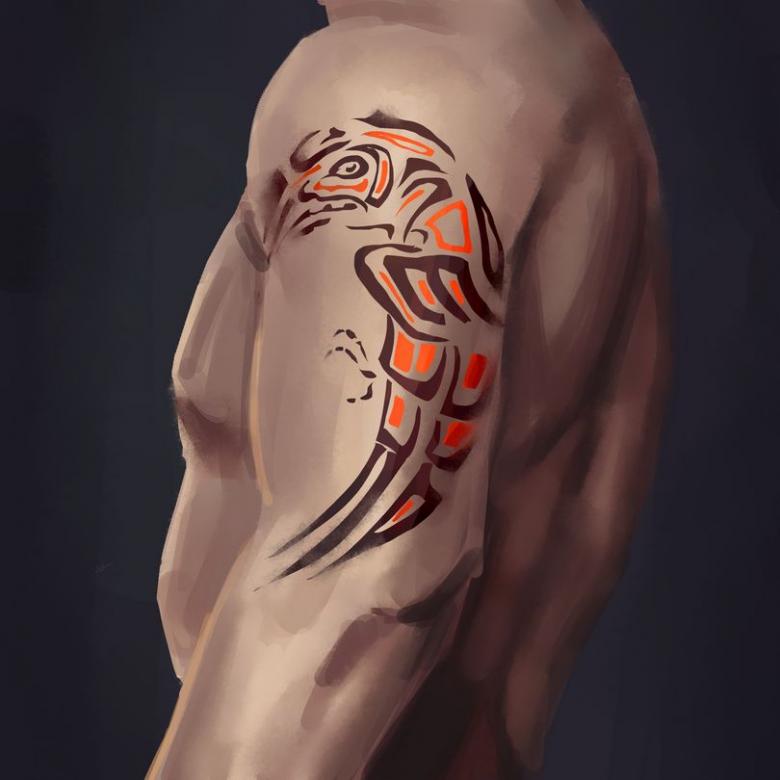
By the way, often a Hyde is a great option for overlaying old, faded or irrelevant tattoos. It is important only to monitor the brightness and accuracy of the lines of the new version. To do this, it is worth a regular visit to the salon to update the ethnic design.
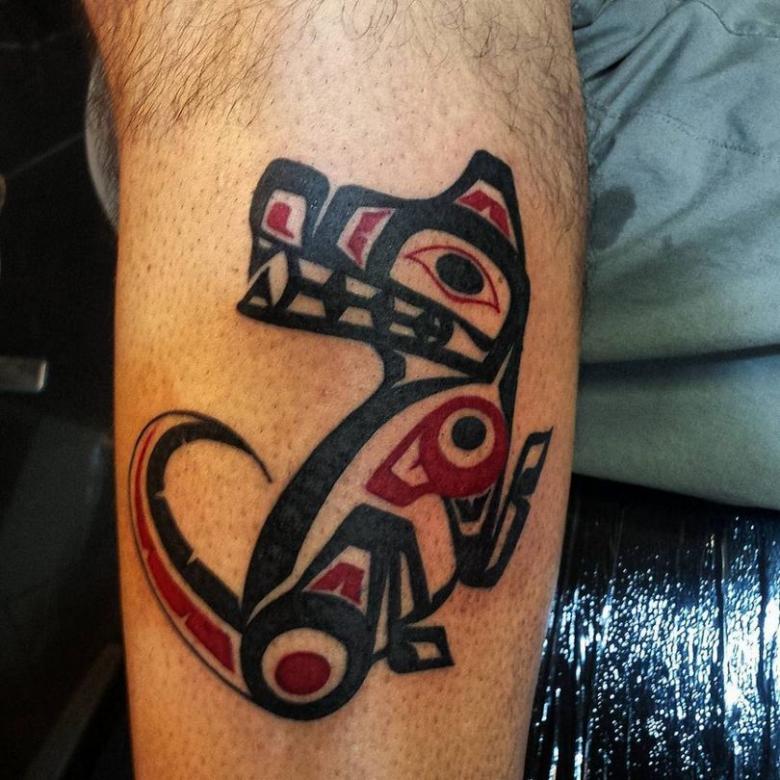
Choose the best samples of Haida tattoo on the photo - and consult with the master about the final version of the sketch. He will prompt options for the realization of your ideas and desires.

